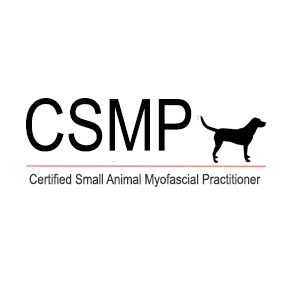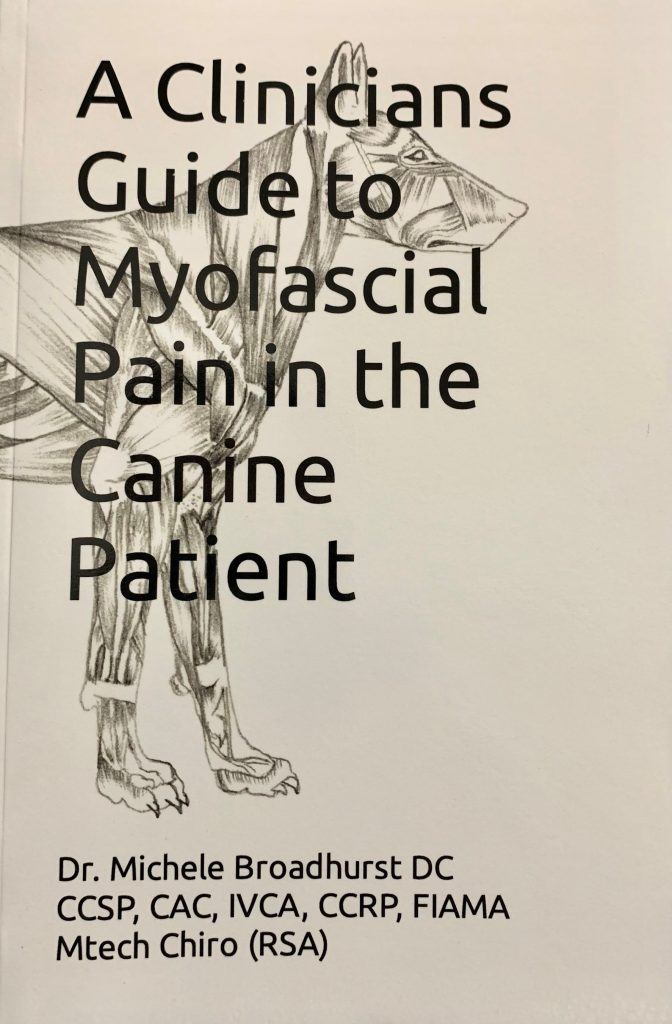About
The Certified Small Animal Myofascial Practitioner course provides students with the essential tools and qualifications to effectively identify and treat myofascial trigger points in dogs and cats.
The program necessitates that you have a strong foundation of functional anatomy and physiology prior to the course. Building on that foundation this program will cover myofascial pain syndromes, myofascial trigger points, palpation techniques, diagnosis, gait analysis, and various treatment options.
Treatment options include modalities and myofascial dry needling with a focus on 25 muscle groups: looking specifically at trigger point location, referral patterns and treatment protocols. The focus is on treating pain syndromes caused by myofascial trigger points and the compensations that result in structural and functional dysfunction.
The online section covers the concept of myofascial pain and trigger points, their anatomy, and a multimodal approach to them.
During the live hands-on lab component of the course, students will advance their knowledge and understanding with hands-on labs and demonstrations focused on identifying and diagnosing myofascial trigger points, choosing the correct treatment option and implementation. The emphasis is on gait analysis, identifying movement patterns and compensatory mechanisms that result in these and other myofascial disorders and the best methods to treat them efficiently and effectively in a clinical setting.
Students are taught through a blended learning environment of online lecture and live hands-on labs, in order to spend the majority of the lab time on demonstrations and hands-on training to fine tune their skills. After the online class work is completed, students are eligible to attend a live lab, complete their case studies and then sit for the online final exam.

Curriculum
CSMP I: Online Lecture + Textbook – $399.00
CSMP II: Live Hands-on Lab and Case Studies – $899.00
CSMP III: Online Final Exam – $149.00
HANDS-ON LIVE LAB DATES: October 4-5, 2024 @ Veterinary Care and Specialty Group, Chattanooga, TN
CSMP I: Online Lecture + Textbook (will be shipped upon purchase) This program will provide an overview of muscle and fascia, myofascial pain syndromes and trigger points. Palpation, diagnosis and a wide range of treatment options are then discussed, including treatment technique, legislation and needle safety. The 25 muscles that we are going to focus on in this course are then covered extensively with an emphasis on location, referral patterns and treatment protocols per muscle group.
Online Section 1: Introduction
- Defining the relationship of muscle, fascia and trigger points
- Myofascial pain syndromes in cats/dogs & treatment
- Palpation
- Diagnosis including Gait Analysis
- Acupuncture vs Dry Needling
- Treatment, Needle Use and Techniques
- Shockwave and laser
- Kinesiology taping
- Other modalities, needle safety and legislation
Online Section 2: Muscles
- Sternocleidomastoid (SCM), Omotransverse, Trapezius
- Rhomboid, Supraspinatus, Infraspinatus
- Deltoid, bicep, tricep
- Teres, Latissimus dorsi, Pectorals
- Superficial and middle glut, TFL, Piriformis
- Hamstrings, adductors and femoral triangle
- Quadriceps, Sartorius, Gracilis
- QL, paraspinals
- Cranial tibial, gastrocnemius, conclusion
CSMP II: Live Hands-on Lab and Case Studies
This portion of the course will provide the student with lecture and hands-on experience. Participants are guided through the evaluation and diagnostic principles of myofascial trigger points, how to select the correct treatment option and how to successfully implement that treatment protocol in a clinical setting.
There will be palpation labs on live dogs, the opportunity to learn and implement effective diagnosis and treatment plans and aftercare. Selected equipment such as therapeutic laser, extracorporal shockwave, kinesiology tape and other relevant modalities will be available as treatment options.
Topics covered and learning objectives: an effective exam tailored at myofascial dysfunction, including posture and gait analysis, palpation techniques, diagnostics, all treatment options which will be demonstrated and then implemented by the students, after care and treatment plans.
Case studies will be discussed and assigned at this time. 3 case studies will be required within 90 days of the conclusion of the lab session.
CSMP III: Online Final Exam
After successful completion of CSMP I and CSMP II (including case studies), you are eligible to take the online examination to receive your CSMP certification.

GOAL
To educate professionals who share a common interest in helping animals recover from illness and/or injury, and to help animals to live life to the fullest with minimal pain and discomfort.
Prerequisites
The program is open to the following:
- Veterinarians
- Licensed Veterinary Technicians
- Physical Therapists with documented work experience in the veterinary/animal healthcare field
PLEASE NOTE: Dry Needing is for Vets and PTS (when allowed by practice acts) however there are other modalities addressed like trigger points (shockwave, massage, laser)
Learning Objectives
- Students of the Myofascial Practitioner Program will be trained on the following subjects, concepts and competencies:
- Muscle and fascial functional anatomy and physiology
- Myofascial pain syndromes and myofascial trigger point classifications
- Palpation techniques
- Diagnosis and gait analysis
- Needle techniques and other treatment modalities
- Kinesiology taping
- Needle safety and legislation
- Muscle groups – identifying, diagnosing and treating myofascial trigger points effectively
Upon completion of the Myofascial Practitioner Program, participants will have knowledge and be able to show proficiency in the following concepts:
- Identifying myofascial dysfunction and myofascial trigger points
- Demonstrate effective palpatory and diagnostic techniques specific to myofascial trigger points
- Develop a treatment plan including different treatment options such as myofascial dry needling, laser, extracorporeal shockwave and other modalities.
- Discuss precautions and contraindications, as well as common reactions to trigger point therapy.
- Demonstrate efficiency and effectivity in the treatment options for their scope of practice.
- Develop a treatment plan and after care guidelines.

